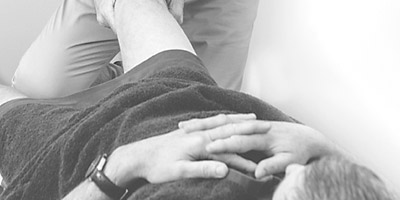Hip Pain? The hips are in charge of posture and keeping our legs going, with healthy and strong hips an essential part of any lifestyle. However, due to the constant pressure and use, the hips are one of the first major joints to deteriorate. Hip pain can be common for people with all types of activity level. With prolonged sitting, standing or moving all influencing our hips, we need to ensure we are loading our hips correctly for the longevity of our physical condition.
Physiotherapy for Hip Pain
At Blackwood Physio we first do an initial evaluation of your hip pain. This is ensure correct diagnosis and proper management. We will talk with you to gain information about the history of your problem, the aggravating and relieving factors, and about any past medical history that may contribute to the overall problem. Based ont the information provided a focused examination will be conducted.
The examination may consist of several assessments including, but not limited to:
Gait evaluation
A gait evaluation is an assessment of how you are walking. Our physiotherapists are trained to notice small changes in the hip during different phases of walking. This can help lead to proper management.
Palpation
We use our hands to touch various structures around the hip to feel for abnormalities or to assess if a structure is painful to touch.
Range of motion measurements
Range of motion refers to how far your hip is bending, straightening, or rotating.
Strength measurements
There are many muscular attachments around the hip and a measurement of strength can help determine if muscular weakness or imbalance is causing your hip pain.
Functional mobility tests
Your physiotherapist may watch you walk, climb stairs, or run to determine how your hip pain affects your overall mobility.
Special tests
Special tests are specific manoeuvres performed around the hip to help determine which structure may be at fault and may be causing the problem. This may include testing of the low back to determine if your hip pain is really coming from your spine.
After the initial evaluation, we will be able to initiate a plan of treatment for your hip.
The therapist may use physical agents like heat or ice help with inflammation. Passive treatments like heat or ice may feel good, but active engagement in your physiotherapy program through exercise has been proven to be the best treatment for hip pain.
Exercises to improve hip strength or mobility may be prescribed by your physical therapist. You also may have to perform exercises at home each day as part of a home exercise program. It is important for you to be an active participant in physical therapy, and ask questions if you have any.
Common causes of Hip area pain include:
- Arthritis
- Bursitis
- Hip Fractures
- Tendinitis
- Muscle or Tendon Strain
- Pinched nerves
- Osteoporosis
Common symptoms:
- Thigh
- Inside of the hip joint
- Groin
- Outside of the hip joint
- Buttocks
Treatment options
- Massage
- Manual therapy
- Dry Needling
- Joint mobilisation
Self Help
- Rest
- Over the counter pain relief
- Cold or heat pack

